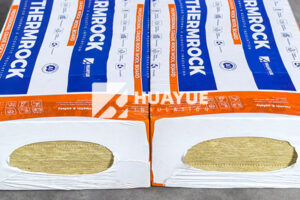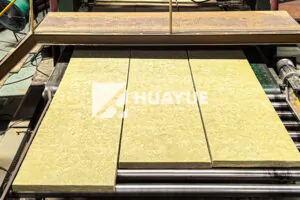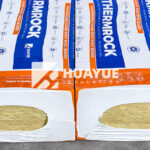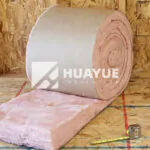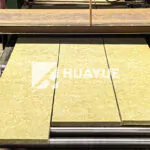Roc kwool Market Insights: Trends, Drivers, and Future Outlook for Stone Wool Insulation
Following our exploration of Rockwool’s product characteristics, let’s shift focus to the dynamic market landscape surrounding this versatile insulation material. Understanding the market forces—trends, drivers, challenges, and opportunities—is crucial for manufacturers, distributors, builders, architects, and investors involved in the construction and industrial sectors. This post delves into the key insights shaping the global Rockwool (stone wool) market.
(Note: Market data can fluctuate. While this post reflects current understanding and projections based on available information as of early 2024, always consult the latest market reports for specific figures.)
Current Market Snapshot: A Resilient and Growing Sector
The global market for Rock wool insulation is substantial and continues to exhibit steady growth. Valued in the billions of dollars, it represents a significant segment within the broader insulation industry. While specific growth figures vary by report and region, the consensus points towards a positive trajectory, often outpacing general economic growth due to specific underlying drivers. Rockwool’s established reputation for high performance, particularly in fire safety and acoustics, anchors its position in the market.
Key Growth Drivers Fueling Demand
Several interconnected factors are propelling the demand for Rockwool products globally:
- Stringent Energy Efficiency Regulations: This is arguably the most powerful driver. Governments worldwide are implementing stricter building codes and energy performance standards (like EPBD in Europe, LEED/Energy Star in North America) to combat climate change and reduce energy consumption. Rockwool’s excellent thermal insulation properties directly contribute to meeting these requirements, driving its specification in both new builds and renovations.
- Heightened Focus on Fire Safety: Tragic fire incidents globally have led to increased scrutiny of building material fire performance. Rockwool’s non-combustible nature (often achieving Euroclass A1 rating) and ability to act as a fire barrier make it a preferred choice where fire safety is paramount – in high-rise buildings, public facilities (schools, hospitals), industrial settings, and densely populated areas. Regulations increasingly mandate non-combustible insulation in specific applications.
- Increasing Demand for Acoustic Comfort: Urbanization leads to denser living and working environments, making noise pollution a significant concern. Rockwool’s inherent density and fibre structure provide exceptional sound absorption and transmission reduction. This drives its use in interior partition walls, floors, ceilings, and facade systems to create quieter, more comfortable, and productive indoor spaces in residential, commercial, and hospitality sectors.
- Growth in Global Construction Activity: Expansion in residential, commercial, and industrial construction, particularly in developing economies within the Asia-Pacific region and ongoing infrastructure projects globally, naturally fuels demand for all building materials, including insulation.
- Booming Renovation and Retrofitting Market: A large portion of existing building stock is poorly insulated. Government incentives, rising energy costs, and a desire for improved comfort are driving a significant wave of renovation and retrofitting activities, particularly in mature markets like Europe and North America. Rockwool is well-suited for upgrading thermal, acoustic, and fire performance in older buildings.
- Sustainability and Green Building Movement: The push towards sustainable construction practices favors materials with benefits like energy savings, recycled content, durability, and recyclability. Rockwool scores well on these fronts – its energy-saving potential over its lifespan far outweighs the energy used in production, it incorporates recycled materials, and its durability ensures long-term performance.
Market Segmentation Insights
Demand for Rockwool varies across different segments:
- By Product Type: Batts and boards dominate the building insulation segment due to ease of installation in standard construction framing. Loose-fill finds use in attics and complex cavities. Pipe sections and specialized shapes are critical for industrial and technical insulation. Growth is seen across most types, driven by the application demands.
- By Application: The Building & Construction sector (residential and non-residential) remains the largest consumer. Within this, demand is strong for both exterior wall insulation (cavity and continuous) and interior applications (acoustic and fire separation). The Industrial & Technical Insulation segment (high-temperature processes, HVAC systems, marine/offshore) is also significant, relying on Rockwool’s high-temperature resistance and specialized product forms.
Regional Market Dynamics
- Europe: Often seen as the most mature market, driven by stringent energy efficiency (EPBD) and fire safety regulations. A strong renovation market and high environmental awareness contribute significantly to demand.
- North America: A large market with substantial new construction and growing renovation activity. Increasing adoption of stricter energy codes and growing awareness of fire and acoustic benefits are key drivers.
- Asia-Pacific: Represents the fastest-growing regional market, fueled by rapid urbanization, infrastructure development, and increasing implementation of building standards in countries like China, India, and Southeast Asian nations.
- Rest of the World (Latin America, Middle East & Africa): Shows growing potential as construction activity increases and building standards evolve, though market penetration may be lower compared to mature regions.
Competitive Landscape
The Rockwool market is relatively consolidated, with a few major global players holding significant market share. Key companies include ROCKWOOL Group, Knauf Insulation, Saint-Gobain (through CertainTeed/ISOVER brands), and Owens Corning. Alongside these giants, numerous regional and local manufacturers cater to specific markets. Competition typically revolves around:
- Product performance and innovation
- Pricing strategies
- Distribution networks and availability
- Brand reputation and technical support
- Sustainability credentials
Challenges and Headwinds
Despite the positive outlook, the Rockwool market faces challenges:
- Competition from Alternatives: Rockwool competes with other insulation materials like fibreglass (often lower initial cost), foam plastics (EPS, XPS, spray foam – sometimes offering higher R-value per inch but with different fire properties), and natural insulation materials. Price sensitivity, particularly in some residential segments, can be a factor.
- Installation Considerations: While not overly complex, proper installation requires PPE, and its density can make cutting slightly more laborious than lighter materials, potentially impacting labor costs.
- Higher Initial Cost: Compared to basic fibreglass, Rockwool can have a higher upfront cost per square foot, although life cycle cost analysis often favors Rockwool due to durability and performance.
- Manufacturing Intensity: Production is energy-intensive due to the high melting temperatures required, making manufacturers sensitive to energy price volatility. Raw material costs can also fluctuate.
- Logistics: Insulation products are bulky, leading to relatively high transportation costs compared to their value. Efficient logistics and regional production are important.
Emerging Trends and Future Opportunities
- Product Innovation: Continued development of products with enhanced thermal resistance, specialized acoustic profiles, improved water management, and easier installation features.
- Circular Economy: Increased focus on take-back programs, higher recycled content, and designing products for easier end-of-life recycling or reuse.
- Digitalization: Use of BIM (Building Information Modeling) objects, digital tools for specification, and automation in manufacturing.
- Prefabrication/Offsite Construction: Growing demand for insulation solutions tailored to modular and prefabricated building methods.
- System Solutions: Focus on providing integrated systems (e.g., facade systems combining insulation, barriers, and cladding) rather than just individual products.
Conclusion: A Market Poised for Continued Relevance
The Rockwool market stands on a solid foundation, driven by fundamental needs for energy efficiency, safety, and comfort in buildings and industrial processes. While facing competition and cost pressures, its unique combination of thermal, fire, acoustic, and durability benefits aligns perfectly with major global trends and increasingly stringent regulations. Innovation in products and processes, coupled with a strong focus on sustainability and regional market development, suggests a resilient and promising future for stone wool insulation as a key material in creating better-performing, safer, and more sustainable built environments.
You may also be interested in:
Ready to Get Started?
Get in touch with our experts for personalized solutions tailored to your needs.
Get Free QuoteLatest Articles
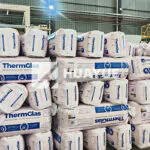
Glass Wool Fire Rating: How Safe Is Your Insulation?
Dec 25, 2025
Let's Work Together
Ready to take your business to the next level? Get in touch with our team of experts and let's discuss how we can help you achieve your goals.
Get Free Solutions
